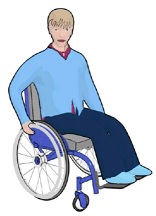Dimensions for Adults and Children [§102]
The ADA Standards provide technical specifications for building elements designed specifically for use by children 12 and younger. These provisions address access for children to:
-
drinking fountains (§602)
-
water closets and toilet compartments (§604)
-
lavatories and sinks (§606) and
-
dining and work surfaces (§902).
The ADA Standards also include requirements for play areas (§240 and §1008) and recommendations (advisory notes) with respect to children’s reach ranges (§301.1) and ramp handrails used primarily by children (§505.4).
The ADA Standards do not specify where or when elements are to be designed or constructed for use primarily by children. This determination is left to other building requirements or regulations, good practice, client preference, or other factors. The provisions covering elements designed for children’s use (other than those addressing play areas) are structured as exceptions to specifications based on adult dimensions. Once the decision is made to design certain elements based on children’s dimensions and to use the exceptions, the alternate specifications provided in the ADA Standards must be followed. The ADA Standards do not require provision of additional accessible elements in order to separately accommodate both children and adults, although doing so may be advisable in mixed use spaces. For example, in some restrooms at facilities such as schools and children’s museums, it may be a good idea to provide a wheelchair accessible toilet compartment for use by adults and another for use by children.


User Comments/Questions
Add Comment/Question